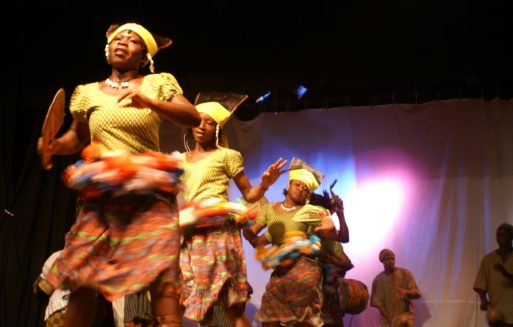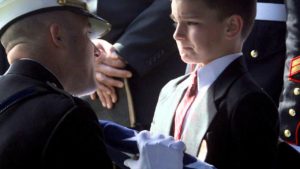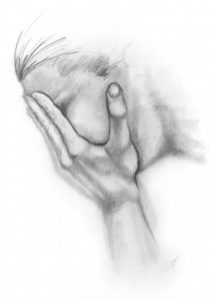Today SevenPonds speaks with Patrick McNally, the inspired real-life funeral director behind the blog The Daily Undertaker, which explores ritual and art surrounding death and dying. In this second part of our two-part interview, Patrick discusses the significance of ritual and how your loved one’s memorial service can harmonize tradition and personalization to hit the perfect key. (Read the first part of our discussion with Patrick here. )
Aurora: You say, “Art and ritual help us to make sense of our mortality.” At SevenPonds, we believe in the importance of personalized ritual as a way to celebrate memory. How have you witnessed the evolution of end-of-life rituals, both as a practitioner in the funeral trade curator for The Daily Undertaker?
Patrick: I think that creating and experiencing art and ritual are the most important of all human activities. We need this abstracted presentation of the world, and our place in it, to better understand and appreciate our existence. End-of-life rituals have an incredible variety across and within the many cultures and traditions in our world. The value in this is that exposure to the traditions of others not only gives us new ideas to incorporate into our own rites, but it helps us see the meaning and importance of our own traditions.

The Dagara people of West Africa incorporate color, dance and music in their funeral rituals
(Credit:dagaramusic.org)
If it can be said that there is an evolution of funeral practices, I would describe it as the interplay between tradition and personalization. Both aspects are extremely important and valuable. I would describe the broad sweep of history in funerals like this: For millennia, funerals have been about traditional ritual, the comforting refrain of time-honored traditions. These traditional rituals have reminded us of our place in our community and in the cosmos. They tell us that our loved one was important to us and to our God(s). They play out for us the drama and ceremony of our beliefs, and reassure us that the rhythm of life goes on despite our loss.
Personalization is the other player in this evolution. As modern society moves away from an identity based on membership within a traditional community, family and culture towards defining ourselves by what makes us unique, we need to celebrate that unique nature in our end-of-life rituals. We want less of the old traditions. We want our service to reflect our personality and not to be the same as everyone else’s funeral. Often the old rituals have lost meaning for us, and we demand that the service be about us, and not about the traditions of our forebears.

Credit: youtube.com
Each meaningful service has elements of both. We need both, and the right mix of the two depends upon the personalities of the person who has died and his survivors. The best services create new rituals and draws on tradition as well as the person’s personality for their message and content. Often rituals involving the physical tasks of preparing the body and transporting it to its place of rest are particularly meaningful. Sharing memories in some form, focusing together on the person who has died, and acknowledging the importance of their lives and their deaths are other essential ingredients in rituals, old and new.
Aurora: Can you tell us about a particularly moving or memorable end-of-life ritual you have witnessed?
Patrick: For me, it was the services for my father, who died at age 42, when I was 8 and my brother was 9. My mother and other relatives created a meaningful and personally relevant service that involved her children and friends, despite the dubious efforts of the funeral director on hand. We viewed and said our goodbyes to my father’s remains. My brother and I created the artwork for the memorial programs and took turns, along with others who loved my father, reading poems and playing active roles in the liturgy. We all witnessed the lowering of the casket and shared in the work of covering the casket with earth.
Now, as an undertaker and writer, I strive to be a gentle force of encouragement and assistance — helping facilitate meaningful rituals, rather than trying to “direct” a family through the service that I might think they should have.

Drawing by John Clum
(Credit: pictify.saatchigallery.com)
Aurora: What advice do you have for someone looking to incorporate art or ritual into an end-of-life celebration?
Patrick: We often do not fully realize what we really feel or think until we try to express it to others; that is the beauty and value of art. I advise setting aside an hour or two to focus on sharing thoughts and memories of the deceased with other survivors. This is a valuable exercise in and of itself, and it can lead you to wonderful places. As the memories come out, look for a theme. The theme doesn’t need to be profound, or to somehow completely sum up that person’s impact or personality. It can be very specific or very general as long as it is true.
Next, build off that theme in a creative and loving way to create a ritual or artistic expression that allows you to acknowledge that person’s life and death. If you are able to involve others in this expression, or even to involve everyone in it, so much the better.
Aurora: Finally, who is your favorite artist who addresses themes of death and dying in her or his work? Why?
Patrick: I appreciate the work of artists who can bring us into their work, involving us, challenging us and changing us. In the visual arts, I think first of designer Sebastian Errazuriz and the elegant way he repositions our expectations with transformative and meaningful results. In ritual arts, I think first of Paula Jardine, whose work at Mountain View Cemetery in Vancouver and Royal Oak Burial Park in Victoria, British Columbia, brings new levels of meaning and involvement between communities and their cemeteries.
I must point out, though, that the most moving expressions I have encountered were created from a place of love by grieving survivors. Art and ritual are not just the province of professional artists. They belong to everyone.
Aurora: Thank you, Patrick, for your insights.

 What is an Undertaker? An Interview with Patrick McNally: Part Two
What is an Undertaker? An Interview with Patrick McNally: Part Two


 “Making Mobiles” by Karolina Merska
“Making Mobiles” by Karolina Merska
 “Hands Up to the Sky” by Michael Franti & Spearhead
“Hands Up to the Sky” by Michael Franti & Spearhead
 Coping With Election Grief
Coping With Election Grief














